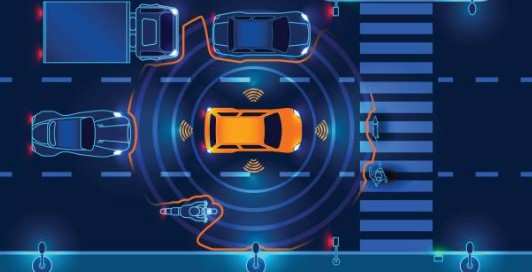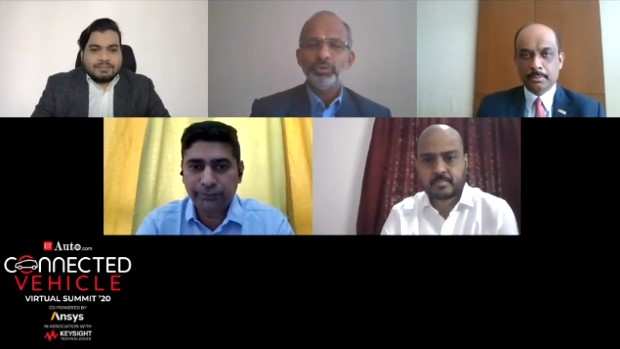
New Delhi: As the world grapples with COVID-19, the need to reconfigure mobility behaviour to battle congestion is becoming more apparent. Undoubtedly, what was once known will not be what will be seen in the post-pandemic world because of the increasing number of connected cars.
At the recently held ETAuto Vehicle Virtual Summit, leading veterans of the Indian auto industry gathered to discuss the potential pathways and possible advancements that will reshape the future mobility landscape in the country.
Underscoring the remarkable mobility advancements that have happened during this challenging time in India’s hinterland, Deepak Shetty, deputy CEO and managing director, JCB India, said his company has witnessed a spike in the utilisation of machines with connected features in rural areas.
“During the pandemic, our sale of genuine parts increased 10-15 times more than in the normal period. This happened majorly because rural customers used apps to buy parts and connect with us. From the utilisation point of view, this gives us confidence that in spite of COVID-19 a lot of activities are taking place,” he said in the panel discussion on Smart Mobility Advancements in a post-COVID world.
Post-COVID scenario is going to accelerate the consumption of real-time data which in turn will drive the concept of smart mobility.Prathab Deivanayagham, country head and managing director, HARMAN India
Rising number of connected cars
About another major progression that the industry is making, experts said that with more number of connected cars on the road automotive datasets are growing faster in a bid to create a rewarding driving experience. Leading research and advisory company Gartner predicts that by the end of 2020, there will be 255 million connected cars on the road — that is, computerised and sending data to the cloud.
In the past few months, there has been a significant drop in the operation and usage of public transportation as social distancing has become a new normal. People are switching mobility preferences to private driving. For OEMs, this particular trend is paving the way to add a unique layer of smart data in the cars to make the best in-car experience for drivers.
“Just take the B-segment cars, for example. Three years ago, we had a handful of features, and now we see close to 50-plus connectivity features offered to the end-users right from tracking to vehicle health monitoring. Today we are seeing lots of OEMs increasing connected features in their vehicles to enhance the overall user experience, and that’s where we are evolving,” Prathab Deivanayagham, country head and managing director, HARMAN India, pointed out. He also said that the post-COVID scenario is going to accelerate the consumption of real-time data which in turn will drive the concept of smart mobility.
The white spots
Underlining the white spots in the context of smart mobility, Deivanayagham said that the last mile connectivity is still an untapped area. “Mobility always talks about going from point A to point B, but the moment you reach point B, there is always that last bit of connectivity which is needed to reach the exact location. This throws a huge potential in terms of delivering a smart parking system or smart traffic management, which can create its revenue streams for both the infrastructure providers and the user,” he added.
It is a joint work between the OEMs and Tier-I suppliers to see how we can make the vehicles as risk-free as possibleSuresh KV, president, ZF India
In parallel with connected car adoption, proactively managing privacy and security of connected car data also holds prime importance, the panellists said.
According to Suresh KV, president, ZF India, to secure these vehicles automakers and parts suppliers have to operate in tandem. “As we move up in technology, the rate of related risk will also increase. It is crucial that while developing codes, we must ensure that it is not hacked. It is a joint work between the OEMs and Tier-I suppliers to see how we can make the vehicles as risk-free as possible,” he said.
Selecting right partners
Experts also shed light on the key fundamental factors for selecting the right connectivity partner. They said that working with numerous vendors has the risk of delivering poor customer experience.
Bhaskar Ghose, head of business development – IoT and mobility, Tata Communications, said that the most important thing that the OEMs want is seamless connectivity and flexibility in terms of cross border connectivity. “OEMs want partners that supply connectivity globally rather than having multiple contracts with different operators and in different regions. In simple terms, automakers prefer a partner who can bring uniform solutions across the globe,” he said.
Smart mobility and EV
At the end of the session, experts discussed the integration of smart mobility with electric mobility. Deivanayagham believes that smart mobility is very much an integral part of electric mobility. “For electric vehicles, there is an infrastructure connected to e-mobility in terms of charging stations. Smart mobility would help in connecting with the overall ecosystem to provide the driver with a seamless user experience and information about where he is positioned and about battery life,” he said.
















